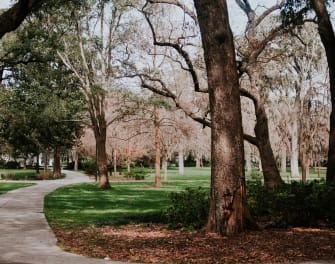As I made my rounds this spring, I noticed a trend that we should all be paying attention to. There have been 3 seasons in the past 4 years when precipitation was way below normal or tolerable levels.

Summer is probably the most demanding season on newly planted trees and shrubs. A mature Oak tree can transpire 100’s of gallons of moisture into the atmosphere. All woody plants transpire moisture more during summer months. Here are some tips to recognize potential drought damage and what you can do to prevent - or reverse - that damage.
A brief introduction
As plants lose moisture, they pull more from the soil. This is basic plant biology that we all learned in high school. What we didn’t pay attention to is how trees and shrubs respond to drought. I remember 3 or 4 years ago when we didn’t see a drop of rain from May through October. This can be very stressful to any nurseryman like myself - or a garden center like ours.
Besides maintaining my plant inventory, I became very concerned for the mature trees and shrubs under my care. When there isn’t enough rain or precipitation during the summer and early fall, and the trees are supposed to be developing new roots for the following year, they aren’t performing their primary objective which is absorption and anchoring. When the rain and moisture isn’t available, tree roots decline and they get smaller.
Trees are the most efficient and economical organisms I’m aware of. Any part of a tree that doesn’t work means it doesn’t eat. When a tree’s root system can’t absorb moisture, for any reason, it's not going to remain a part of that tree for long. This means that drought causes trees to become more efficient and reduce their overall size.
What to watch for
What we should be watching for and what I’m seeing as a trend is; single dead shrubs among other shrubs that appear to be doing well. The tops of mature trees are going to start flagging this year. Dead sections at the top of branches are an indication of root damage or decline and unfortunately these are the symptoms that appear 3 or 4 years after the damage occurs.
I anticipate a few years more where plants are going to die without any obvious reason. Usually, insects and disease will become more prevalent when plants are declining. These pests aren’t the cause of the decline as much as they are a symptom. As the trees and shrubs decline, they're working hard to replenish their resources in the form of glucose or starch. If they begin producing more energy than they’re using, the decline will reverse itself. It’s our job to help the plants become more efficient and productive, to stop the decline.
How to prevent drought damage
Yes, you should water your large shade trees. If you’re relying on your irrigation system to provide the water, it's not enough. Your irrigation system is likely set up to water the lawn. It’s not going to be able to put enough water on the lawn at any one time unless you override it manually.
I recommend using an oscillating sprinkler that covers a large span around the root system. Let it run for hours till at least an inch of water works its way down into the soil. Same thing with your shrubs. Soaker hoses do help and provide more direct water on trees and shrubs; however don’t fool yourself into thinking that an hour is going to help. Try running the soakers for 4-6 hours, even overnight won’t cause any harm. You can’t overwater at any one time, as long as you’re not continuing to water heavily every day. When you water, do it twice a week and allow the soil to dry in between. This is when the roots begin to develop again, when the oxygen returns to the soil.
Remember to fertilize with the organic fertilizers. Balanced applications can be applied 2 or 3 times a year to provide the necessary nutrients. When your plants are healthy, they’re much more efficient and able to care for themselves.
